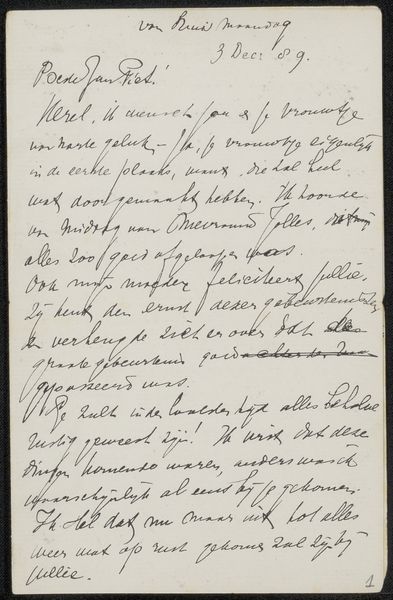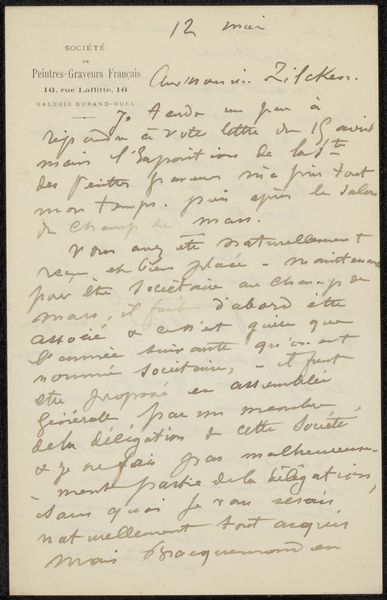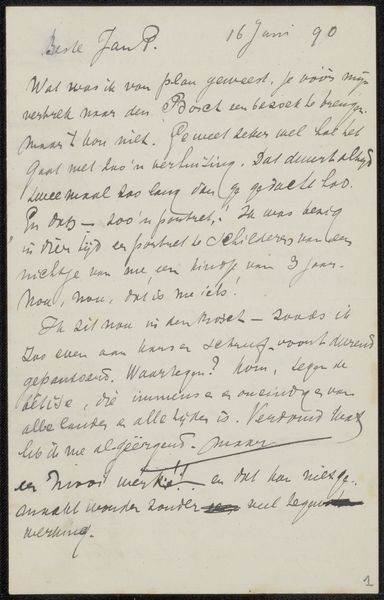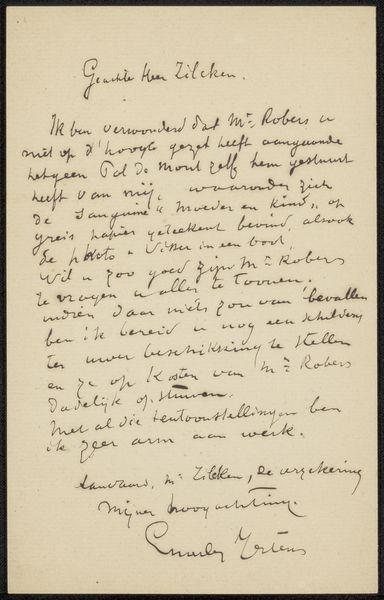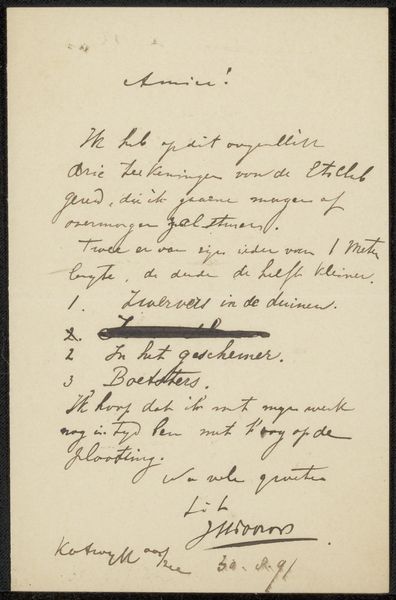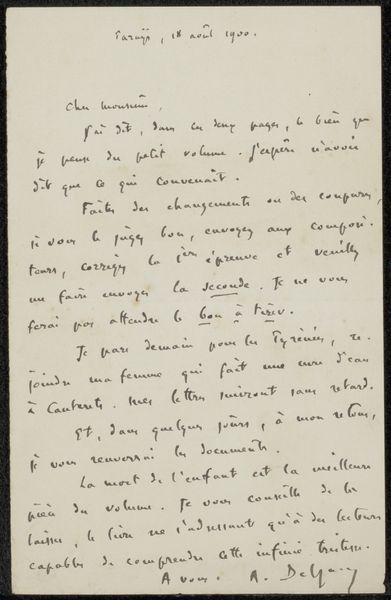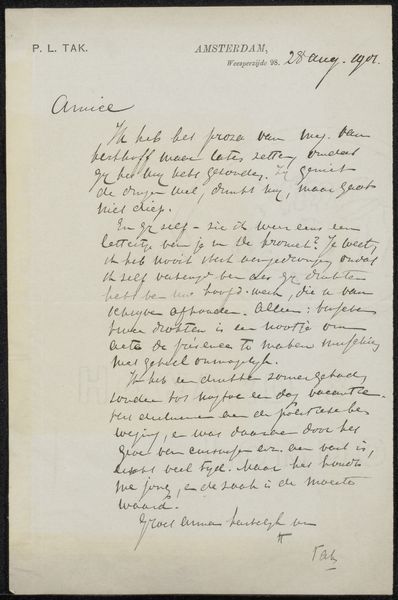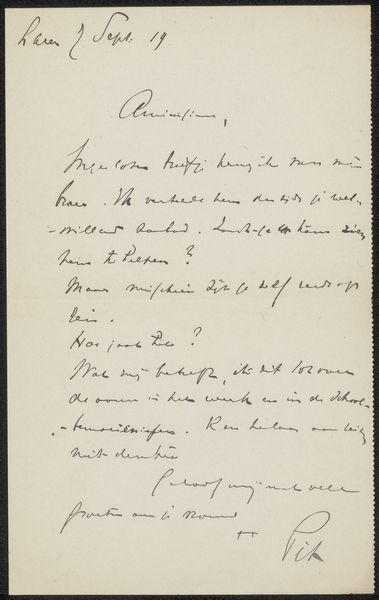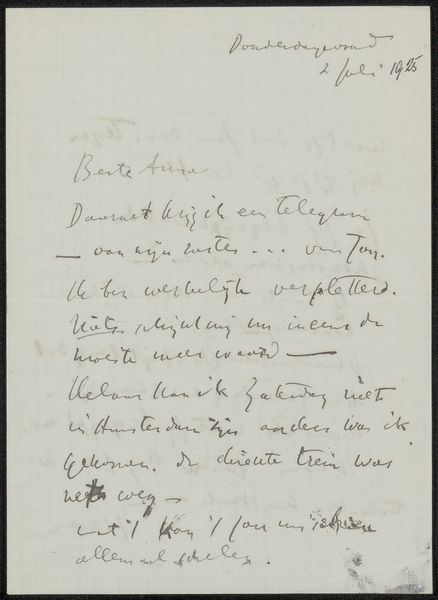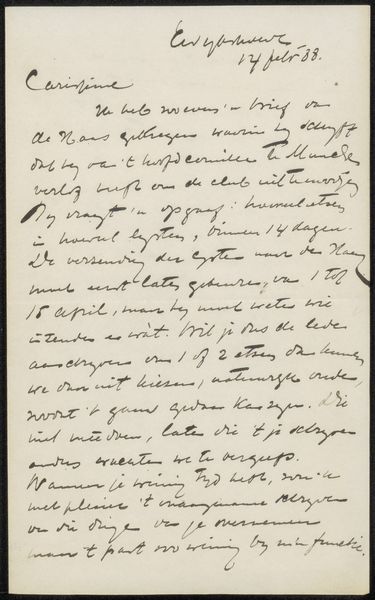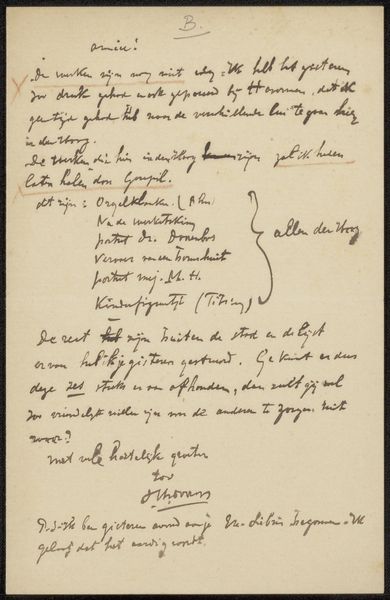
drawing, paper, ink
#
drawing
#
paper
#
ink
Copyright: Rijks Museum: Open Domain
This letter was written in Brussels on August 15th, 1869, by the art critic Théophile Thoré-Bürger. It’s a handwritten document, most likely created with a quill or early fountain pen and iron gall ink, on paper. The deep brown-black ink speaks to a time when correspondence was a more deliberate act. The creation of ink was itself a craft, a recipe of tannin, iron salts, and gum arabic mixed by hand. The very act of writing this letter, from mixing the ink to forming each careful word, involved time and labor that we rarely consider today. Look closely and you can see the variations in pressure, the individual character of each stroke, reflecting the human hand and mind at work. Thoré-Bürger’s words about Rembrandt, Fabritius, and van Kessel remind us that art history is built upon layers of interpretation and exchange. This letter is a material witness to that process, a physical connection to a pivotal figure in art criticism, demonstrating that even the simplest note carries cultural weight.
Comments
No comments
Be the first to comment and join the conversation on the ultimate creative platform.


